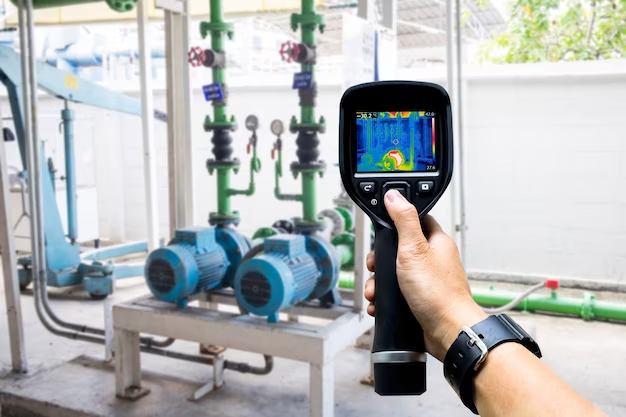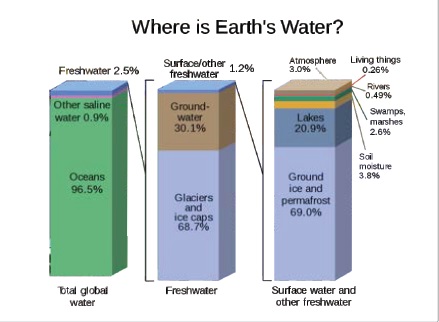Introduction:
The finite nature of water resources and their susceptibility to pollution, contamination, and climatic influences underscore the pressing need for strategic interventions to ensure sustainable usage. The Sustainable Development Goal’s target 6.4, recognizes this challenge and demands increased water efficiency which is a way of easing water demand pressure/water user conflict by more effectively utilizing every unit of existing supply.
Urban areas, in particular, grapple with burgeoning demands, prompting the imperative adoption of water conservation practices capable of reducing consumption by up to one-third, concurrently mitigating surface and groundwater pollution. According to UN estimates 416 million more people are anticipated to live in India’s metropolitan areas by 2050. The accelerated rate of urbanization in conjunction with climate change may present new difficulties in terms of the growth of demand, the strain on natural resources, and the expansion, management, and operation of vital infrastructure. Depleting groundwater tables, declining resource quality, and growing water shortages are all indications of growing gaps between the supply and demand for water.
In an era marked by rapid urbanization and industrialization, the sustainability of water resources has become a critical global concern. Recent instances in mid-2018, such as the water crisis in Shimla, India, and the prolonged water shortage in southern Johannesburg, highlight the pressing need for a comprehensive approach to water management.
The National Water Policy, as outlined in both 2002 and 2012, acknowledges the imperative for the development and administration of water resources to be guided by a national viewpoint. Its primary objective is to foster the sustainable development and conservation of limited water resources through an integrated and environmentally responsible approach.
According to the NITI Ayog’s Composite Water Management Index Report from 2018, India is experiencing its biggest water crisis to date. Democratic and equitable access to clean water needs to be discussed especially in the context of urban areas. With alarming predictions of a 40% shortfall in water supply compared to demand by 2030, urgent action is needed. This article delves into the challenges faced by urban and industrial sectors and explores innovative solutions to ensure sustainable water management for a secure future.
Recognizing the need to counter these challenges, the Government of India (GoI) launched the Smart City Mission (2015) and the Accelerating Growth of New India’s Innovations (AGNIi) Mission (2019) to unleash the power of technological innovation against India’s most pressing challenge, especially for water management in urban areas.
Smart City Mission emphasizes on leveraging cutting-edge technologies like sensors, GIS, and AI to optimize water management throughout the urban water cycle. GOI (under its Jal Jeevan Mission for rural India, 2019) has already implemented a variety of sensors, such as flow meters, groundwater level sensors, chlorine analyzers, pressure sensors, and pump controllers, to measure quantity, duration, quality, pressure, sustainability, and other pertinent aspects of water service delivery, as well as to provide operational efficiencies. This initiative needs to be expanded to the urban areas with a mission mode. This approach enhances operational efficiency, promotes water conservation, and ensures the sustainable use of water resources.
Metering and measuring water usage have proven effective in optimising consumption and identifying leaks in urban settings. The Pune Municipal Corporation’s integrated water resource management serves as a successful example of technology-enabled systems enhancing efficiency and revenue growth. Water conservation is encouraged when users pay for the amount they use. Evidence from the UK shows that installing meters reduces consumption as the findings indicated that by the time the customer receives their fourth metered bill, which comes about two years after meter installation, overall water consumption had decreased by 22%, or an average of 89 litres per household per day. Costs are automatically reduced because of water conservation, both immediately (by lowering operating expenses) and later (by delaying expensive system expansions).
According to UNESCO (2023) study industrial water withdrawal averages 17% of total water use in high-income countries but only 2% in low-income countries. Estimates for future water demand in industry and energy are not widely available:
The water crisis impacts both the domestic and the industrial sectors. Indian business has a growing opportunity to make a significant contribution to the equitable, sustainable, and responsible management of water resources. The approach of 3M viz Mapping, Measuring, and monitoring of water consumption by industry is vividly discussed.
The Niti Ayog Report on Water Neutrality For Indian Industry (July 2023) highlights the Water management techniques adopted by Indian cement industries such as Ambuja, Dalmia, and J K Cement. Water footprints have been drastically decreased by implementing heat recovery plants and switching from wet, water-intensive processes to dry ones. A crucial component of their efforts is community involvement and partnership with local bodies, which guarantees openness and confidence. Water storage, rainfall collection, and wastewater recycling are top priorities for many businesses. The next ten years should focus on sustainable goals including checking dams and replenishing groundwater. Beyond plant limits, environmentally friendly methods are being used to address water needs for horticulture, industry, and household use. This community-focused strategy demonstrates industry-wide dedication to sustainable long-term use of water and best practices.
Mandatory water audits for companies utilizing groundwater or having extensive water usage should be enforced. Industries can adopt various approaches, including equipment modification, water-saving devices, recycling, reverse osmosis, and effluent treatment plants, to reduce their water footprint.
While governments and the corporate sector play a crucial role in water management, the responsibility shouldn’t rest solely on their shoulders. Civic engagement is crucial to develop sustainable water management models. Individuals like Mr. Rajendra Singh, popularly known as the ‘Waterman of India’, helped villagers take charge of water management in their dry areas of Rajasthan and built water conservation structures to collect rainwater for the dry seasons. Ramveer Tanwar, a young mechanical engineer turned conservationist, has shown that impactful change can be initiated at the grassroots level. Through his efforts, more than 80 public water bodies have been rejuvenated. Nimal Raghavan left his lucrative job in Dubai and made the restoration of water bodies in India, the mission of his life. Since 2019, through his team of volunteers, he has raised funds and revived more than 140 lakes, rivers, and ponds across Karnataka, Andhra Pradesh, Uttar Pradesh, Haryana, and Tamil Nadu. Women collectives like Jal Saheli’s (Women Water Warriors) of Bundelkhand have shown a promising future by conserving water ponds, helping build a network of check dams, and undertaking rainwater harvesting to recharge water bodies in a drought prone area. Recognizing and glorifying such water warriors is essential to inspire citizens to contribute to the cause and create more future leaders.
Conclusion
The magnitude of the water crisis demands national initiatives and collaborative efforts. Policies that promote sustainable water practices, coupled with robust enforcement mechanisms, are essential. Educational programs can raise awareness about water conservation and the importance of responsible water usage. Public-private partnerships can facilitate the implementation of innovative solutions, with businesses contributing to sustainable practices in water management.
The journey towards water sustainability necessitates a collective effort involving technological innovations, policy interventions, and individual responsibility. Recognizing and celebrating successes while learning from challenges will pave the way for a future where water is not a source of conflict but a catalyst for harmony and growth. By fostering a sense of ownership and responsibility among individuals, industries, and states, we can ensure a sustainable and secure water future for generations to come.





